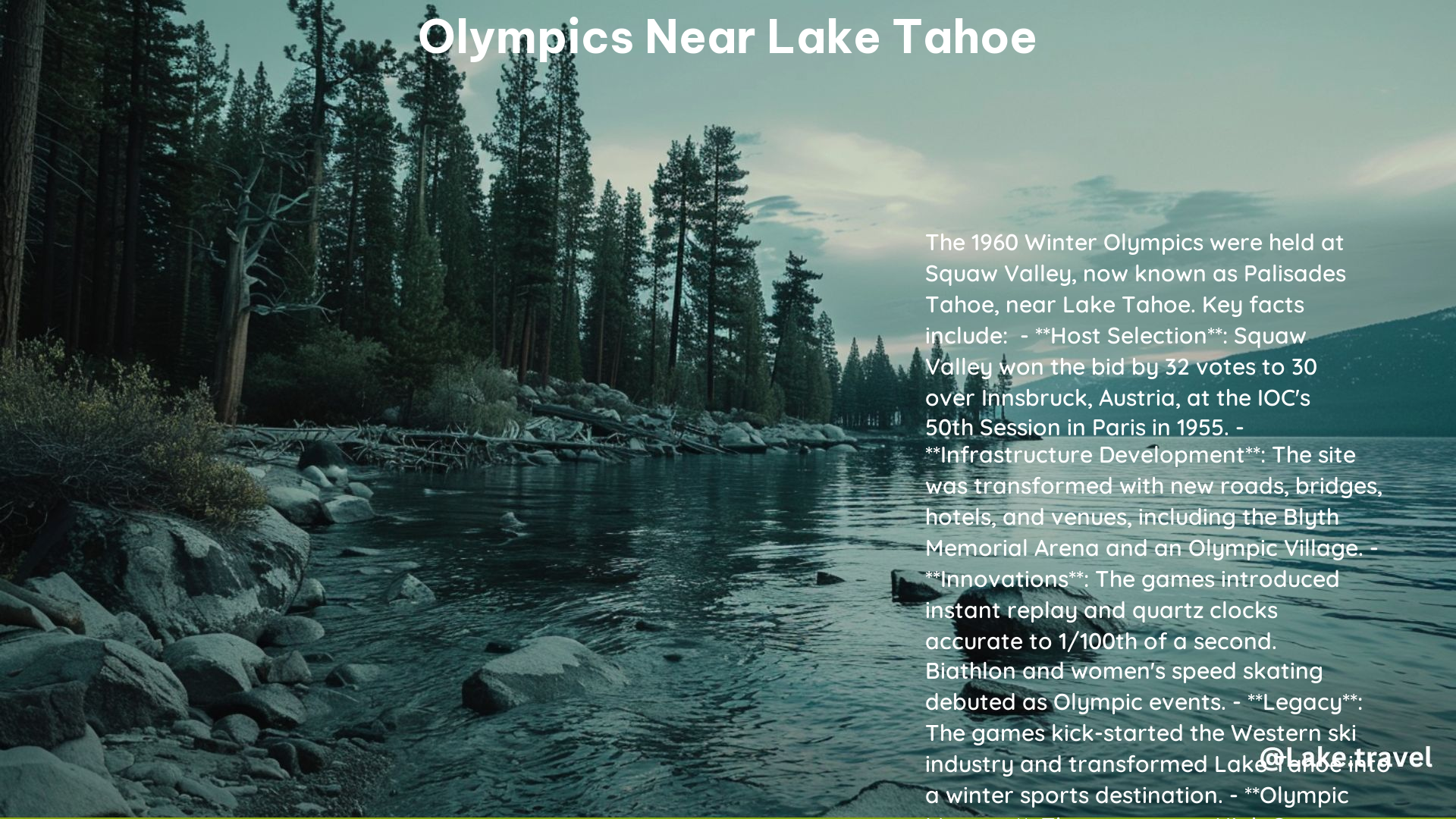The 1960 Winter Olympics, held in Squaw Valley near Lake Tahoe, California, were a groundbreaking event that transformed the region into a premier winter sports destination. From the construction of state-of-the-art facilities to the introduction of new Olympic events, the Squaw Valley Games left an indelible mark on the history of the Olympic movement.
Squaw Valley: The Unlikely Host
In 1955, Squaw Valley, a relatively unknown ski resort, was selected to host the 1960 Winter Olympics, beating out more established contenders like Innsbruck, St. Moritz, and Garmisch-Partenkirchen. This decision was largely due to the efforts of Alexander Cushing, a landowner who envisioned transforming the valley into a world-class winter sports destination.
Infrastructure Development

In less than five years, the largely undeveloped site of Squaw Valley was transformed into a fully equipped and accessible town. This massive undertaking included the construction of:
- Roads and bridges
- Administrative buildings
- Hotels and motels
- Restaurants
- A sewage network
- Upgrades to the nearby Reno Airport in Nevada
The Olympic Village
For the first time in Winter Games history, a purpose-built Olympic Village was constructed to house over 750 athletes in four 75-bedroom buildings. This innovative approach to athlete accommodations set a new standard for future Winter Olympics.
Venues and Innovations
The Blyth Memorial Arena hosted the Opening and Closing Ceremonies, figure skating competitions, and ice hockey matches. Other venues included a ski jumping hill, a 400m indoor ice rink, three outdoor rinks, and the downhill skiing runs on KT-22, Little Papoose Peak, and Squaw Peak.
The 1960 Olympics also introduced several innovations in media coverage, including the use of instant replay, quartz clocks accurate to one hundredth of a second, and the first computers used to create and print event standings.
Notable Moments and Olympians
The 1960 Olympics marked the debut of biathlon and women’s speed skating, increasing the total number of events to 27. French skier Jean Vuarnet became the first to win a medal using metal skis instead of traditional wooden ones.
The Lake Tahoe region has produced several notable Olympians, including figure skater Carol Heiss, the first woman to take the Olympic oath, and current athletes like Julia Mancuso, Travis Ganong, Marco Sullivan, and Nate Holland, who are featured in the Olympic Museum at High Camp.
The Olympic Museum
The Olympic Museum, located at High Camp in Olympic Valley, California, offers visitors a glimpse into the history and legacy of the 1960 Winter Olympics. Open daily when the Aerial Tram is in operation, the museum is free to visit with the purchase of an Aerial Tram ride.
Legacy and Challenges
The 1960 Olympics kick-started the growth of the Western ski industry, transforming Lake Tahoe into a popular winter sports destination. However, climate change has raised concerns about the feasibility of hosting future Winter Olympics in the region, as snow conditions become less predictable.
The Squaw Valley 1960 Winter Olympics left an indelible mark on the region and the Olympic movement, paving the way for the growth of the Western ski industry and introducing innovative media coverage and athlete accommodations. As the world continues to grapple with the challenges of climate change, the legacy of the 1960 Games serves as a reminder of the adaptability and resilience of the Olympic spirit.
Reference:
– Squaw Valley 1960 Winter Olympics
– Olympic Museum at High Camp
